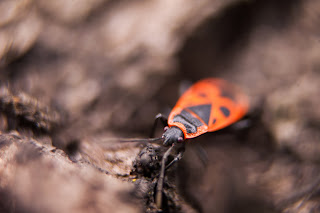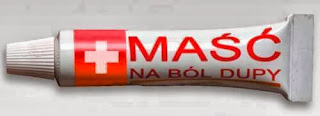My adventure with photography began a few years ago, discovering a passion for seeing the world through the lens ... One day, friends asked me to take photographs of their wedding. From that moment began my fascination with photography. In this remarkable day, accompanying a young couple from the preparations, I have witnessed many magical moments that immortalized, giving a poignant documentary of this extraordinary day.
Wednesday 27 November 2013
Wednesday 20 November 2013
Monday 18 November 2013
Costa Brava - Lloret de Mar: Lloret de Mar
Costa Brava - Lloret de Mar: Lloret de Mar: Lloret de Mar Coast characteristic of Costa Brava can also find on the right of the main beach. Rocks on the Bay of Cala Banys , which i...
Saturday 16 November 2013
How to make a macro, but without a macro lens
24-70/2.8L + 3 intermediate rings
To
capture the beauty of the photographs of nature awakened after the
winter , take advantage of high-quality macro lens for SLR cameras . This type of glass is clear , the most incredibly sharp and more importantly , sharpen from several centimeters to infinity . Unfortunately
, macro photography with professional lenses is fun for people who are
able to invest a few thousand in a good glass . For someone who wants to occasionally take pictures of close-up, purchase of such equipment will be passed rather the point. There are ways that reduce the focusing distance for a fraction of that amount. The test shots helped me a Canon 5D Mark II with lens 24-70 mm f/2.8 L and 85 mm f/1.8 .Equipment and methodsFor starters I have good news for you - contrary to appearances, you do not need to have ultrajasnego lens. The primary objective is enough 18-55 mm , as in reducing the distance from the subject , depth of field becomes more shallow. Aperture must be stopped down to f/5.6 minimum value , the maximum brightness kitowych lenses. Full-frame SLR camera matrix also does not help having fun with photos macro - larger matrix is even less depth of field. The portrait will be most welcome . In macro photography - on the contrary.
Canon 24-70 mm f/2.8 L + three intermediate rings
1 magnifying glass
It's a very cheap solution - if you have a magnifying glass drawer Put your backs to the front lens and see that expanded the image. Unfortunately, the majority has the power magnifiers 2 diopters, so magnification will not be spectacular. If, however, you would have to buy a special glass, look for another way to be a little more expensive.
2 Reversed lens
It's a very cheap solution - if you have a magnifying glass drawer Put your backs to the front lens and see that expanded the image. Unfortunately, the majority has the power magnifiers 2 diopters, so magnification will not be spectacular. If, however, you would have to buy a special glass, look for another way to be a little more expensive.
2 Reversed lens
This, in turn, a very popular way for a cheap macro. Look for the drawer of your parents 'or grandparents' old lenses connected to the camera by Zenit and Praktika. Most are Pentacony Heliosy 50/1.8 or 58/2. I bet that most of you have such a gem somewhere in the attic. After applying the inverted lens focusing distance decreases drastically offering very high magnification. Your dealer can also reverse mount rings through which said cheap Pentacon screwed like a filter to the lens attached to the camera. I used Pentacon 50/1.8 85/1.8 applied to Canon.
With the right thread profiling, lenses perfectly adhere to each other, so keeping them with one hand does not cause any trouble. The disadvantage of this type of solution is the fact that we make the whole system more lenses, which may arise chromatic aberrations, and the focus will fall. Magnification is so big that hit the sharp point will not be easy. However, as the free solution is truly worthy of attention.
3 macro Lenses
3 macro Lenses
Set a large (77 mm) lens with power 1, 2, 4 and 10 diopter costs less than 80 zł. Their big advantage is the absence of light loss and high flexibility - from low magnification for a lens 1, to a very large for 10. Lenses are screwed as a filter, and packaged in a neat box is really easy to use.
The disadvantage is that adding another element to the optical system, whereby focus images is smaller, and severe aberrations. However, for 80 zł hard pressed to find a more universal solution.
4 Couplings
4 Couplings
Couplings is my favorite in this statement. An undoubted advantage of this method is that it does not we make any lens to the optical system, so you will feel the loss of quality. Tested by me rings Meike cost about 240 zł and have metal mount automatic transfer. For about 180 zł get an economic version of plastic bayonet. The set includes three rings, 13, 21 and 31 mm, which can be combined by increasing the scale of representation.
Importantly
, the lens does not lose its optical properties , and the rings fit any
lens with a particular attachment to both the kit for 300 zł , and a
telephoto lens for a few thousand zł . The downside is some loss of light. This
is by far the best solution for macro photography budget , because we
do not lose our quality lens , and even pocket is not too stripped .summationAs you can see , low-cost ways to macro photography is quite a lot. You may also be interested in the company Raynox lens or macro bellows . Will
get the highest magnification using an inverted lens , but it carries a
deterioration of quality, and to hit the point of a miracle . For
those who want to save , I'll fly macro lenses that are cheap , but
with different power , will prove themselves in most situations. For those who care about quality will fly the most expensive of the described solutions , the intermediate rings . It is true that you have to reckon with the loss of light, but the sharpness of the image will be the best of these solutions . Another plus is the fact that they work with all lenses of the system.Accessories guide lent us Notopstryk.pl store , for which I thank you
Following is a collection of photographs depicting larger for individual solutions.Thursday 14 November 2013
Circular Polarizing Filter - CPL
Eliminates glare, reflections from the surface of metal and glass. Increases color saturation and contrast. An example of this might be darkening the sky in the exhibition. Filter maximize clarity. The use of this filter is recommended in order to obtain sharp images especially on sunny days.

No filter CPL CPL filter
In the picture below you can see the effect of polarization filters are set correctly.

No filter CPL CPL filter
In the picture below you can see the effect of polarization filters are set correctly.
Friday 8 November 2013
Thursday 7 November 2013
Subscribe to:
Posts (Atom)



















